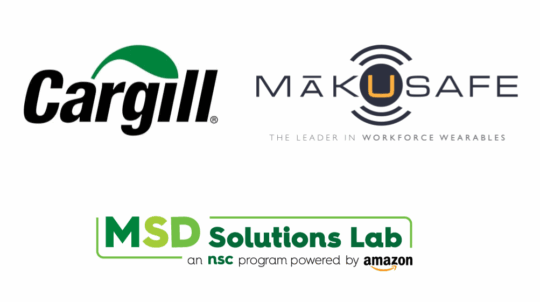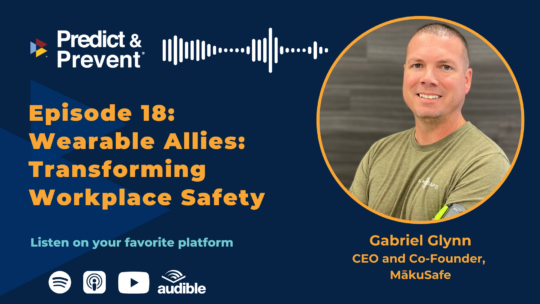Wearable Tech for Heat Safety Featured in VPPPA’s The Leader
August 23, 2022

The following article appeared in the August issue of VPPPA’s The Leader publication.
By Tom West, SPHR, SHRM-SCP, COSS
Heat illness and injury prevention is an ever-present challenge in many industries. Each year there are scores of fatalities, and thousands more become ill while working in heat. OSHA recently instituted a National Emphasis Program to shine a spotlight on this preventable workplace hazard.
Most all know that rest, shade, and hydration are key. Companies have likely built these heat protocols into their safety programs. Yet, many may struggle with exactly when these practices should be enacted, and for who. How much intervention is prudent’ How do we ensure workers in unique environments such as indoors are protected?
A more individualized approach that provides predictive leading indicators, is using wearable technology to monitor heat-related risk or every worker. This can give safety leaders the insight and focus needed to be proactive and keep their people safe.
A Scorching Problem
The impact of hot temperatures on safety risks has been escalating the past two decades. The trends that prompted OSHA to take action include:
- Heat waves are the top weather event that cause workplace deaths’Heat causes over 3,500 injuries and illnesses each year’
- An average of 35 heat-related fatalities occurs annually’
- The hottest years on record have been in the last 18 years
A heat index over 80 degrees is considered a heat priority day, although heat-related incidents may occur at even lower levels. The National Weather Service (NWS) alerts using four ranges: caution, extreme caution, danger, and extreme danger. Those at most risk are likely the construction and agriculture industries. But, the current emphasis certainly implies that heat and humidity levels, as well as radiant heat sources•, should also be a concern for indoor facilities. This means that foundries, kitchens, laundries, warehousing, manufacturing operations, and many more industries should be monitoring heat index and taking appropriate action’. Technology now makes this possible, and industrial workforce wearables offer a powerful tool across industries. NIOSH safety regulations also emphasize acclimatization for workers who are new or returning to work after vacation or leave. People need time
to physiologically adjust to hot environments. What this means is that supervisors need to be attentive to variations in heat sensitivity among their workforce.
Wearables are helping bridge this gap. Wearables can aid prevention efforts Wearable technology is a game-changer for heat injury and illness prevention. Now sensors in a lightweight armband are capable of tracking leading indicators of risk, including an array of ever-changing environmental conditions around an individual worker. By monitoring temperature and relative humidity, it is now possible to automatically calculate the heat index for each worker. The readings are as mobile as the worker is. These measurements are programmed to generate notifications that can be pushed to leaders whenever heat exposure corresponds to the NWS thresholds. Constant monitoring allows at-risk workers to be flagged quickly so appropriate interventions are taken. And with an entire workforce equipped with a wearable, you can essentially generate a live heat map of your worksite or facility. Multiple device readings can also highlight workstations of concern. Consider that an outdoor heat index can’t capture the risk of a worker near an indoor heat source. They might also be experiencing dramatically different temperatures than someone further away-a discrepancy a stationary room sensor is unlikely to capture.
A wearable allows granular readings to be captured no matter where an employee is performing a task.
Another benefit is that wearables will assist with compliance by providing a retrievable history of data. Inspectors are tasked with evaluating if a worksite has an appropriate injury prevention program, such as asking, “how did the employer monitor ambient temperature(s), and levels of work exertion at the worksite'”‘· Routine readings that are time, date, and location stamped over a period can demonstrate awareness and be the basis for further study and action. Even though a small and inexpensive wearable isn’t using the wet bulb method of testing, these routine readings can provide insight into where and when more sophisticated testing might be deployed. One of the approved ways to document on-site heat conditions is with relative humidity, which a wearable can easily provide.
Advanced wearable technology can be a powerful source of leading indicator intelligence, and a tool that can help lower the risk of heat-induced illness. They can be simple to deploy and use; unobtrusive devices that help supervisors maintain a safe worksite. Wearables are the next evolution in safety. Digital PPE, if you will.
There are several emerging industrial wearable offerings. Many have a niche focus, or strength. In considering a new innovative tool there are considerations; cost, versatility, acceptance, and useability, among them. But now this technology is so accessible that organizations can easily deploy innovation and reap immediately actionable data that can strengthen a safety program, positively impact culture, and respect worker privacy.
Read The Leader publication here.





